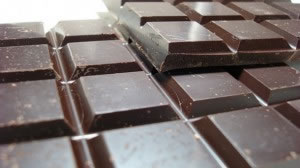Novel chocolate sensory analysis method touted by researchers
Brazilian researchers say a new method for sensory analysis of chocolate could slash description times in half compared to the conventional technique.
In research published in the journal Food Quality and Preference, researchers talk up the new Optimized Descriptive Profile (ODP) method, which had previously been used to characterize creamy cheeses.
Existing methods
Many chocolate makers currently use Conventional Profile sensory analysis. This method involves a panel of judges who require lengthy training to understand evaluation scales and sensory analysis lingo.
Rank Descriptive Analysis (RDA) is another method that has been developed over the past decade, which compares products based on intensity rather than “calibration” of sensory memory.
Study author Silva and her team, who came from across three Brazilian universities, said that while RDA helped save time it did not allow for quantitative evaluation of samples.
Optimized Descriptive Profile
The team therefore tested the ODP method, which Silva et al developed in 2012.
It involves judges comparing samples using attribute-by-attribute protocol. This means they receive all samples at the same time and classify a single attribute one-by-one on a scale of weak to strong.
The researchers say the method can cut time compared to the conventional method and provides quantitative information and better detection of sample differences compared to RDA.
Study design
To reach these conclusions, Forty pre-selected judges were split into analysis groups – either an ODP analysis group, an RDA group or a Conventional Profile group – and were asked to analyze three Garoto brand chocolates with different formulations.
Da Silva et al. found that the RDA method was the quickest, but ODP gave greater discrimination of the chocolates analyzed and could still cut the time required in half compared to the conventional technique.
“This method showed to be superior to the RDA for discrimination of products and was also an alternative to decrease the interaction between judges and formulations,” concluded the researchers.
“Therefore, this method is presented as a promising tool for sensory description of foods, both in the context of research and in industry.”



































